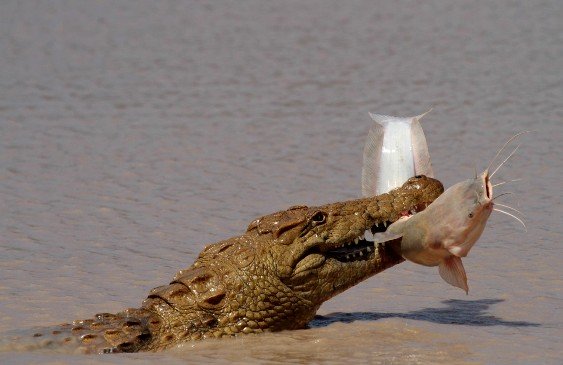The croc and the barbel

The Nile crocodile is found widespread in rivers, lakes and marshes of Africa. It is the second biggest, extant reptile on earth. Only the saltwater crocodile, the Indo-Pacific or estuarine crocodile is larger. The Nile crocodile is more closely related to crocodiles of the Americas than to the kind found in West Africa.
Nile crocodiles are ambush predators with great patience and agility. They will eat fish such as this ill-fated barbel, mammals, other reptiles and birds that venture where they lie and wait. At night ambushes on land, well away from water may be attempted. Once the conical teeth have closed upon the hapless prey, hope for a reprieve is usually soon abandoned.
The female crocodile guards her eggs laid by the waterside, as well as the newly hatched little ones for a while, but they have to find their own food from the start. They will eat small fish, frogs and insects, progressing to larger meals as they grow.
Herodotus wrote in the fifth century BC that Nile crocodiles have symbiotic relationships with certain birds like plovers. These birds were said to pick leeches from the crocodile’s teeth. This prevented the leeches from sucking the crocodile’s blood.
The story no longer holds; many generations of stories have been written about the species since, varying in factual accuracy. Maybe the time will come one day, when people will write about a mythical species of the past, the Nile crocodile that may have existed on earth far back in antiquity, as strange as the unicorn. Or maybe the crocodile outlives humanity (Wikipedia).

